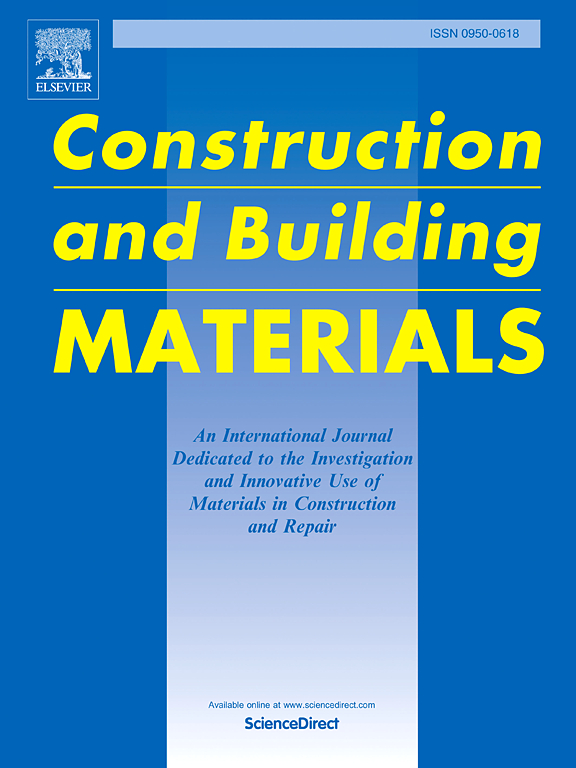Preparation of wood scrimber with low hygroscopicity and high flame retardancy through impregnation of silicon-boron inorganic salt
IF 7.4
1区 工程技术
Q1 CONSTRUCTION & BUILDING TECHNOLOGY
引用次数: 0
Abstract
Wood scrimber, known for its structural stability, strength, and efficient material utilization, faces significant flammability challenges that limit its application in construction and outdoor environments. To enhance fire safety in construction and meet building codes requirements, flame retardant treatment of wood scrimber is essential. Inspired by the honeycomb structure formed by propolis, beeswax, and intricate arrangements, flame-retardant wood scrimber materials were fabricated using phenolic resin adhesive, a flame retardant agent composed of a 1:1 mixture of sodium silicate (9-hydrate) and sodium tetraborate decahydrate, along with defibrated wood scrimber units. The treated wood scrimber exhibited self-extinguishing properties upon flame removal, with a 31 % reduction in peak heat release rate (pk-HRR2), a 14.9 % reduction in total heat release (THR), a 38 % reduction in peak smoke production rate (pk-SPR), and a 43.7 % reduction in total smoke release (TSR), demonstrating a synergistic fire retardant effect between the silicon and boron compounds. Characterization through infrared spectral analysis (FTIR) and X-ray photoelectron spectroscopy (XPS) revealed that the cross-linked structure formed by sodium silicate and boric acid with the wood creates a dense char layer in the porous voids of the wood. The release of crystalline water at high temperatures further enhanced fire retardancy and reduced smoke production. This method holds promise for large-scale applications in construction and interior decoration, offering both fire resistance and low smoke emission.
求助全文
约1分钟内获得全文
求助全文
来源期刊

Construction and Building Materials
工程技术-材料科学:综合
CiteScore
13.80
自引率
21.60%
发文量
3632
审稿时长
82 days
期刊介绍:
Construction and Building Materials offers an international platform for sharing innovative and original research and development in the realm of construction and building materials, along with their practical applications in new projects and repair practices. The journal publishes a diverse array of pioneering research and application papers, detailing laboratory investigations and, to a limited extent, numerical analyses or reports on full-scale projects. Multi-part papers are discouraged.
Additionally, Construction and Building Materials features comprehensive case studies and insightful review articles that contribute to new insights in the field. Our focus is on papers related to construction materials, excluding those on structural engineering, geotechnics, and unbound highway layers. Covered materials and technologies encompass cement, concrete reinforcement, bricks and mortars, additives, corrosion technology, ceramics, timber, steel, polymers, glass fibers, recycled materials, bamboo, rammed earth, non-conventional building materials, bituminous materials, and applications in railway materials.
 求助内容:
求助内容: 应助结果提醒方式:
应助结果提醒方式:


